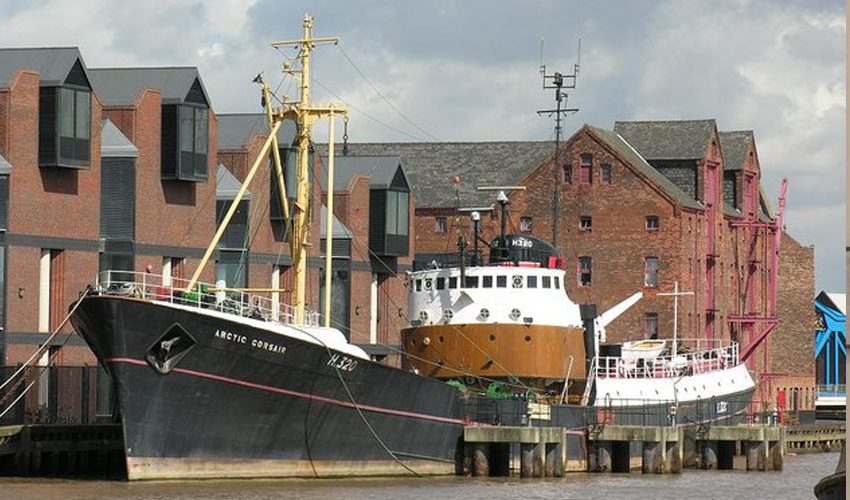
Hull City Council has secured £3.5m of European Regional Development Funding for the River Hull plus scheme.
The project is part of a wider £37million Environment Agency investment in the city to repair flood defences along the river in the city, protecting over 60,000 properties, and helping to secure the long-term future of the Arctic Corsair.
Subject to match funding from the Environment Agency, the Arctic Corsair could be relocated permanently from its existing berth to a dry dock, at Dock Office Row/High Street, North End Shipyard.
This would be to save the trawler for future generations as it currently requires extensive refurbishment works to preserve it.
A funding bid is currently being prepared and the work encompassed within the ERDF scheme allows a permanent solution to be found to dry dock the Arctic Corsair.
The relocation of the trawler is crucial, as its current location is causing a build-up of silt at the base of the vessel, and access is required in order to construct and provide new and enhanced flood prevention infrastructure. Once the trawler has been refurbished, it cannot return to its original location.
Councillor Martin Mancey, Portfolio Holder for Energy City, said:
“Following a recent survey, it was found that there is an urgent requirement to restore and dry dock the Arctic Corsair in order to ensure its long-term survival. If this essential work isn’t undertaken, then we risk losing the vessel due deterioration beyond repair.
“This move will not only preserve Hull’s last sidewinder trawler, but will continue to symbolise the city’s connection with its historic fishing trade.”
If agreed, the Corsair will be permanently berthed at Dock Office Row as a visitor attraction.
Built in 1960, the Arctic Corsair broke the world record for the landing of cod and haddock from the White Sea in 1973, and was active during the Cod War. She is currently moored on the River Hull in a tidal berth and is kept as a visitor attraction, operated and maintained by volunteers in partnership with Hull City Council. It is on the National Historic Ships Register (No. 628), and an application is pending to have her added to the Historic Fleet.
Councillor Alan Clark, Portfolio Holder for Neighbourhoods and Communities at Hull City Council, said:
“I am delighted that we have secured this critical EU investment into flood infrastructure for the city, which will further enhance the £37m River Hull plus scheme and provide a high-level of protection throughout the river corridor to thousands of homes and businesses.
“By working closely with the Environment Agency, we are able to deliver an extremely beneficial scheme to reconnect the city with the river, through improving the waterside environment and kick-starting the regeneration the area.”
Richard Hartley, the Environment Agency Project Executive for the Hull River Defences project said:
“We are committed to supporting growth and development in Hull and have been working in partnership with Hull City Council to seek funding to provide additional enhancements to our scheme.
“The improvement of the flood defence infrastructure brings with it the opportunity for opening up the river corridor for regeneration and economic growth within the city, and moving the Artic Corsair is a exciting opportunity to make the most of the city’s maritime & cultural heritage.”
PHOTO © Copyright George Robinson and licensed for reuse under this Creative Commons Licence.


